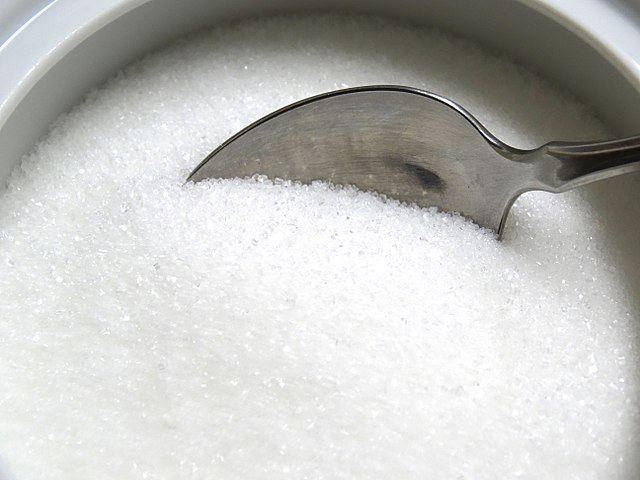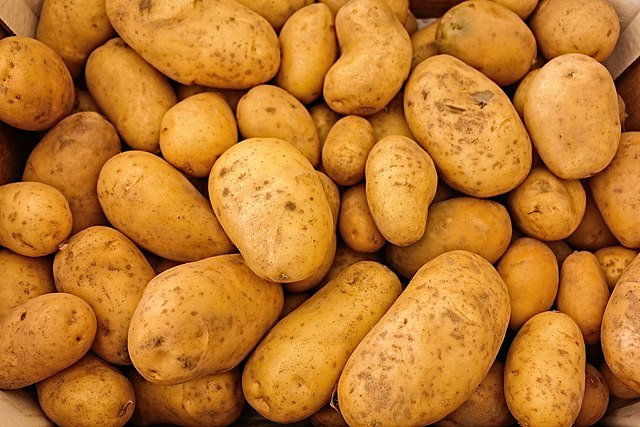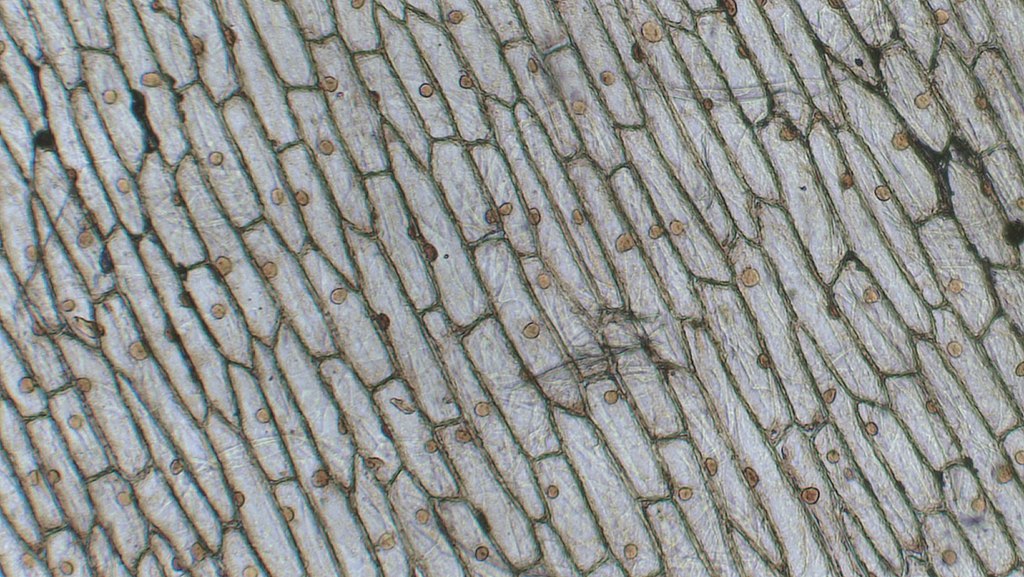GCSE Biology - AQA
2.1.1 - Carbohydrates
Jump to:
Carbohydrates
Carbohydrates are group of biological molecules that are made up of the elements carbon, hydrogen and oxygen.
There are two types of carbohydrates: sugars and complex carbohydrates.

There are two types of carbohydrates: sugars and complex carbohydrates.
Sugars
Sugars are small, water soluble carbohydrates. They usually have a sweet taste.
Examples of sugars include glucose, sucrose and deoxyribose.

Examples of sugars include glucose, sucrose and deoxyribose.

The sugar which is added to food is made up of crystals of sucrose.
Sugars have two main functions: they are used as a source of energy and they are used as building blocks for making other molecules.
Sugars as a source of energy
Cells often use sugars as an energy source. Sugar molecules have chemical energy within them, and through a process called respiration they can be broken down, releasing this energy. The energy can then be used to drive various processes within the cell (such as active transport and movement).

Sugars can be used as a source of energy. In respiration, sugars are broken down into smaller molecules, releasing energy which can be used by the cell.
Sugars as building blocks
Sugars can also be used as building blocks to make larger molecules which perform other functions.
For example, glucose molecules can be bonded together to form complex carbohydrates such as starch, glycogen and cellulose (see below).
The sugar deoxyribose forms part of DNA molecules. This will be covered in more detail on the page on DNA structure.

The structure of DNA, which contains the sugar deoxyribose. Image: DNA orbit animated.gif by Zephyris (Richard Wheeler) on Wikimedia Commons, License: https://commons.wikimedia.org/wiki/Commons:GNU_Free_Documentation_License,_version_1.2
Complex carbohydrates
Complex carbohydrates are very large molecules that are formed by joining together many sugar molecules. Often, hundreds or thousands of sugar molecules join together to form one complex carbohydrate molecule.
Examples of complex carbohydrates include starch, glycogen and cellulose. All three of these complex carbohydrates are made up of many glucose molecules joined together, however they all have different structures.

The complex carbohydrates starch, glycogen and cellulose. They are each made of many glucose molecules joined together, however their structures are very different to each other.
Functions of complex carbohydrates
Starch and glycogen are used as energy stores. Starch is used in plants and glycogen is used in animals. They can be used to store large amounts of energy in a fairly small amount of space. When this energy is needed they can be broken down into glucose, which can then be used in respiration as a source of energy.
Note that glucose is an energy source, whereas starch and glycogen are energy stores.
When starch and glycogen are broken down, they become glucose. Remember that glucose is not just used as an energy source, it is also used as a building block. Therefore, starch and glycogen provide a way of storing building blocks as well as energy.

Potatoes contain large amounts of starch. They provide a way for the potato plant to store energy and building blocks underground during the winter. The energy and nutrients can then be used to regrow the rest of the plant when the weather improves.
Cellulose is the biological molecule that the cell walls of plants and algae are made out of. It has a structural role - it helps to give the cell strength and shape.

Onion cells viewed through a microscope. The cell walls are made of cellulose.
Names of carbohydrates often end in '-ose'
Note that the names of many carbohydrates, especially sugars, end in '-ose'.
For example: glucose, sucrose, deoxyribose (sugars) and cellulose (a complex carbohydrate).
Flashcards
Flashcards help you memorise information quickly. Copy each question onto its own flashcard and then write the answer on the other side. Testing yourself on these regularly will enable you to learn much more quickly than just reading and making notes.
1/6
What are carbohydrates?
2/6
What are the two types of carbohydrates?
3/6
What are sugars?
4/6
How do cells use sugars?
5/6
What are complex carbohydrates?
6/6
What are some examples of complex carbohydrates and their functions?
Next Page
2.1.2 - Proteins
Previous Page
1.3.1 - Tissues, Organs and Organ Systems
Return to course page
Donate
Please consider donating to support Mooramo. I am one person doing this whole project on my own - including building the site, writing the content, creating illustrations and making revision resources. By making a one-time or repeating donation you will buy me time to work on Mooramo, meaning that I can get new content on here more quickly.
Donate